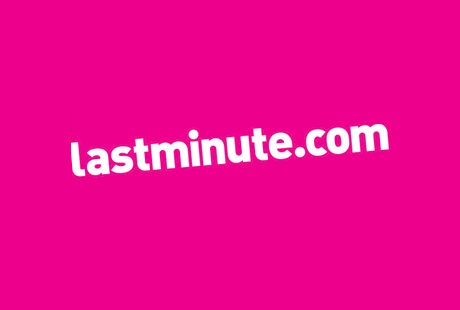About the company
lastminute.com has undergone a rapid and dramatic change. When it was founded in October 1998 by two young entrepreneurs, Brent Hobermann and Martha Lane Fox, many critics viewed it as a ‘typical’ Internet start-up that would burn up cash and then disappear.
But the company has proved its critics wrong. Following the success of the UK site, localised versions of lastminute.com have since been launched in Europe, South Africa and Australia. It now has almost 7 million registered subscribers worldwide.
Meeting the demand of its burgeoning customer numbers, as well as its expanding product line, has proved a huge technical challenge in terms of both scaling up its infrastructure and managing customer transactions. To meet that challenge, lastminute.com has implemented a complex mixture of middleware technologies, and has invested heavily in open source technologies to keep costs down.
Chief technology officer Chip Steinmetz, who only joined the company in late 2002, has over 20 years experience in IT, most recently at Walt Disney Internet Group where he was executive vice president and head of technology. Steinmetz has also held a number of roles developing analytic and real time trading systems for large investment banks in the UK, and has been able to draw on this experience in building the complex transactional systems that underpin lastminute.com’s business.
He spoke to Information Age about the role technology has played in building lastminute.com’s business.
Information Age (IA): lastminute.com has morphed from an Internet start-up into a publicly listed, profitable company. What role has technology played in this?
Chip Steinmetz (CS): This is a very technology-oriented business. From the outset, the company’s founders, Martha [Lane-Fox] and Brent [Hobermann], wanted lastminute.com to offer an interesting and useful customer experience. That is all enabled and facilitated by how we implement technology. There’s nothing that we offer that’s not based on some sort of technology – it is absolutely core to what we do.
IA: Given the degree of change the company has undergone, the increase in the number of registered customers and the greater breadth of products you now offer, how has the technology had to adapt?
CS: We offer a number of services that work as standalone processes from a technical standpoint – say you buy a flight ticket, for example, you need all the technology in place to process that end-to-end, from placing a reservation, issuing the ticket and getting your response in the shopping basket on the web site. There are the same kind of processes if you book a hotel room or a rental car. But we’ve also engineered technology to work across all of those services concurrently. So this means we can now do dynamic packaging – putting hotels and flights and whatever else together and calculating the price dynamically, so that we can offer a better service to our customers.
IA: That’s a highly complex process. What are the key technology elements that support it?
CS: It’s a combination of middleware technologies. This includes our original platform, which is based on ATG’s Dynamo application server and Java. A decision was made about a year ago to supplement that architecture with the open source application server Jboss. So we now have two middleware systems – ATG Dynamo and Jboss – talking together in real time and working with all the other applications involved in each transaction.
It’s very complex. For example, if you have 10,000 customers who are simultaneously buying a combination of products, each product transaction represents a session, and there are many transactions associated with each session. Each of these sessions runs on a Java Virtual Machine, which is constantly talking to other Java Virtual Machines.
Most customers obviously don’t know that all of these events are transpiring during the course of their session on the site. This makes it difficult to keep performance at high levels. But if you can get it right, you can offer products in very unique and dynamic ways, and the customer experience gets progressively deeper and richer. The other benefit is that the complexity of what we’re doing could be a barrier to entry for other companies.
IA: Your background is in stock market trading floor technology. Have you been able to draw on that experience when building these highly complex applications at lastminute.com?
CS: The challenges are very, very similar. But the challenge at lastminute.com pushes the boundary of anything I ever came across in the investment banking community. No question about that. There’s perhaps a slight reduction in terms of the volume of transactions that go through our system, but even here we do some very large volume things too – trawling through multiple airline ticketing systems for the best deal and then presenting that to the customer in the space of a few seconds, for example.
IA: How do you manage all these systems and ensure that they are working together successfully?
CS: Systems management is one of the things that will become progressively more interesting for us through time, and something we can become better and better at. How can we make performance better? How can we improve reliability at each step? That’s how we improve the customer experience.
We’re trying to offer this unique and dynamic product – these deals are not pre-calculated at the back end as they are at some of our competitors’ sites. Imagine how exciting it would be to book a weekend in Prague, say, getting the system to plan your whole weekend for you – flight, hotel, restaurants. You name your budget and the system will price it for you behind the scenes. That’s where we’re headed.
This means, though, that systems management becomes a bigger and bigger part of our environment. It wouldn’t surprise me if, ultimately, between 25% and 50% of our infrastructure was devoted to systems and application management.
IA: Because of the range of products lastminute.com offers, you must have to deal with a huge number of suppliers. How do ensure that your systems and those of your suppliers can talk to each other?
CS: We receive hundreds of different feeds from our suppliers. Most of them are XML-based with various wrappers around them that translate the suppliers’ protocol into something we can read. But often there’s a proprietary element.
We deal with so many different types of people that we don’t really have the ability to say ‘here’s a standard implementation’. It would be impossible. At our end we have to accommodate all types of technologies these different businesses have, so it’s important we have an architecture underneath all of this into which we can quickly put these things. It’s mostly XML, but not all the time. We even accept faxes.
We also have an extranet that our suppliers, such as hotel chains, access remotely. They can enter their inventory data directly into the system and monitor how they are selling, and we can see, for example, how many rooms they have committed to lastminute.com. It’s still a feed like the ones we receive from other suppliers, but the inventory’s immediately available to both sides.
IA: Could web services technology have a role here?
CS: The concept of web services is fine, but I have a hard time seeing more than a few of our suppliers providing web services stuff on their end, so it’s unclear to me what benefits we’d get. We have hundreds and hundreds of different companies that we have to talk to, all of them are different sizes. There’s no way we’re going to offer them only one way of dealing with us, so just going down the web services route would not be practical.
IA: It sounds as though a lot of your applications are developed in-house – is this the case, and if so, do you use any packaged applications at all?
CS: Almost all of our applications are bespoke, but we do use some third-party products. For example, we use E.piphany for customer relationship management, and while we built part of our search engine ourselves, we also use a commercial search engine called Endeca. Typically we use third-party products to supplement what we already have in terms of bespoke applications.
IA: You’ve talked a little bit about your use of the open source application server Jboss. Do you use any other open source technology at lastminute.com?
CS: Some of our production environment is on [Sun] Solaris, but a large percentage is on Linux. It would be less expensive over time to converge onto one, and a lot of our current development is done on Linux, but we’re being pragmatic – it’s not so very expensive to deal with multiple environments.
IA: Why did you choose to base so much of your infrastructure on open source given that many companies have voiced concerns over its scalability and reliability?
CS: It was basically a cost-saving choice. We want to be as efficient as we can with our investments in technology. As a company we’re willing to make a substantial investment in something in order to build the products that are really exciting, but it is also about how you get the most for your money – and the highest productivity levels from a system.
By deciding to go with Jboss, we avoided having to pay the licence fee for, say, IBM WebSphere or BEA WebLogic, but we reinvested some of that money in building skills internally in open source. It wasn’t very difficult to acquire those skills – open source technologies are pretty well documented and there’s a whole community built around open source.
There is another factor. Everybody wants to work on the latest stuff and open source is a very attractive environment for technology developers to work in. But I don’t know a whole lot of other people that are really pushing the envelope on [open source].
IA: Are there any other technology developments in the pipeline for lastminute.com in 2003?
CS: We’ll just be working to making the products better, quicker and easier to use. And we’re continuing to evolve our product line so that we can introduce many more ‘dynamic’ products. We also need to internationalise our offerings [At the moment, lastminute.com offers only flight and hotel combinations in the 11 countries in which it operates outside of the UK].
To sum up, dynamic, real-time offers are where we’re headed. If you think about it, you might spend the whole day in the travel agency with three different agents working on different aspects of your holiday. With our technology, we can do all of that in real time.







